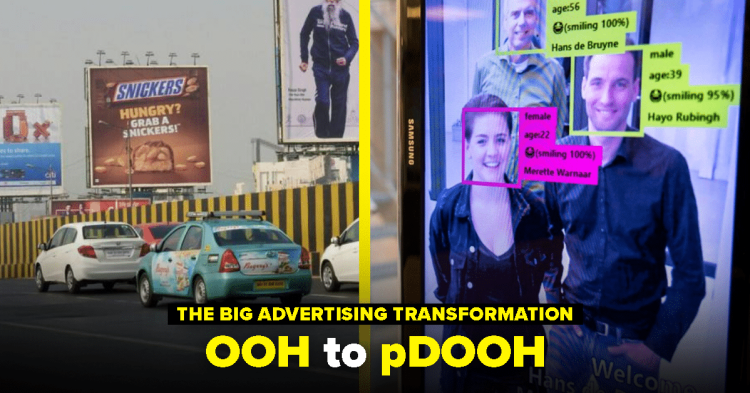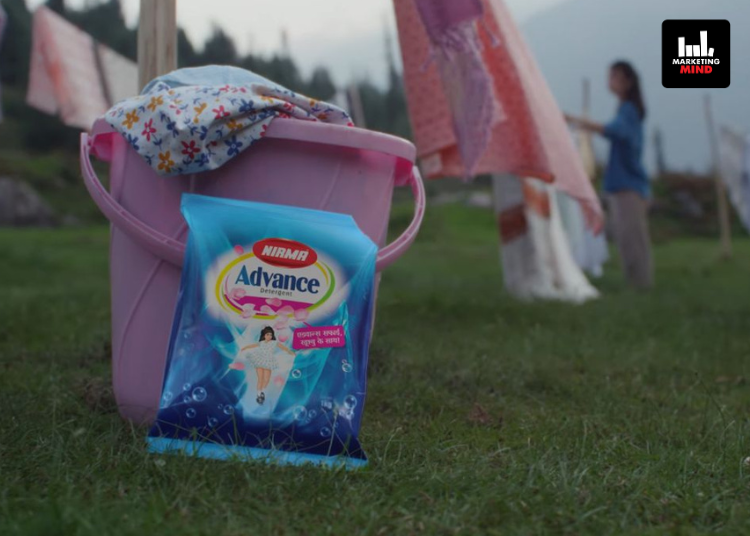Guest post by Prashant Nandan
History of OOH
OOH advertising is experienced outside of the home & this medium of marketing can trace its descent back to primitive civilization. The roadside OOH advertisement in New York started when Jared Bell began printing circus posters 1835. In 1900, a standardized billboard structure was established in US & advertisers like Palmolive, Kellogg, and Coca-Cola began advertising on billboards as part of a national marketing efforts. In 1934 the industry established the Traffic Audit Bureau (TAB) to provide advertisers with third party data about outdoor advertising audiences. French outdoor company JCDecaux established the bus shelter in 1962, a popular outdoor venue which were built at no cost to municipalities and rely on ad revenue for their upkeep. In India Amul did first OOH ad in early 1967 & in year 2007 Indian outdoor advertsiing association was launched as national body of Outdoor Media owners.
OOH To DOOH To PDOOH: Winner is Evident
The Digital India initiative is now the global benchmark & it has digitized most of the media channels including OOH industry & created digital out-of-home, more commonly known as DOOH. In India DOOH can be seen on billboards along a highway to bus shelters on a city sidewalk, you can discover them now on office buildings, malls, gyms, restaurants, bars, college & universities and around Point of purchase areas like modern stores. The Indian digital OOH advertising market size reached US$ 1.5 Billion in 2021. Looking forward, IMARC Group expects the market to reach US$ 3.2 Billion by 2027, exhibiting a growth rate (CAGR) of 14.7% during 2022-2027. DOOH presence is currently limited to metropolitan areas and tier 1 cities & there are 60K+ DOOH screens in India.
The move from OOH to DOOH to PDOOH (Programmatic DOOH) is inevitable. International PDOOH companies (DSP & SSP ) like Hivestack , Moving walls , Place exchange & Broadsign are investing in Indian market . Google’s DV360 already currently partners with various other ad exchanges such as Hivestack, Magnite, PlaceExchange, Ströer SSP, VIOOH and Vistar Media, which give access to major OOH media owners’ inventory programmatically.
“PDOOH offers benefits of the technology used in programmatic advertising, such as targeting, retargeting (via geofencing) enhanced data signals & attribution and measurement & at the same time totally immune to ad blockers & cannot be skipped by the consumer”.
Technically all DOOH can be transformed in PDOOH as it has two main component & once these screen owners activate their inventory on SSP(Supply side Platform ) & ready to share data signals ,it will be available for advertisers to place real-time bids & buy DOOH inventory programmatically.
- Hardware: – A physical devices that power and display content to audience. Hardware includes media players, screens, digital kiosks, and video walls. Browser & Media runs on different operating systems such as Android, Linux & Chrome. New age hardware is also supporting AR & computer vision with camera, sensor & face detection services.
- Software: – DOOH software is Called Content Management system. CMS help publish digital content such as images, texts, videos, and live broadcasts from any server. It allows companies to Play real-time & automated content from single source. For example, if your CMS has any weather app, you will be able to show weather updates on your digital out of home screen.
Impression calculation in PDOOH.
Unlike digital Media where one ad shown on any website/app is known as one impression & function one to one basis, DOOH is a medium where one ad play is viewable by everyone who is in the vicinity of the ads being displayed, hence its one to many medium.
To accommodate this unique audience structure PDOOH uses “impression multiplier” to account for the broader reach of any given play on a DOOH screen. Every impression shown on screen will reach out to multiple people, hence impression multiplier is needed to estimate how many people saw the ad.
There are two parameters provided by Screen owner to determine impression per play.
- Hourly data: – DOOH publishers provide hourly data in terms of mobile phone signals, GPS Data, camera, face detection to give an idea of how many people were around a particular screen when ads were playing.
- Dwell time: – Dwell time or read time is the amount of time, usually measured in seconds or minutes, an audience member spends viewing the outdoor advertising. A digital billboard, for example, on a highway may have a dwell time of 5-10 seconds whereas digital LED billboard at an intersection would have dwell of 25-40 seconds, since the vehicle would have to wait for the light to turn green.
Impression multipliers are calculated from hourly data and dwell time using the following equation:
Impressions per play = hourly traffic data x dwell time (in hours)
Let’s say a digital screen located in a busy area records 2,000 impressions over the course of a day. However, it’s possible that some of those impressions were from the same people who passed by the screen multiple times or viewed the ad for an extended period. To account for this, an impression multiplier may be applied to estimate the total number of unique viewers who were exposed to the ad. The impression multiplier is typically based on historical data and statistical modeling, and it is intended to provide a more accurate estimate of the reach of the ad campaign.
Based on historical data and statistical modeling, the impression multiplier for a particular location is 1.5. This means that for every recorded impression, there were 1.5 unique viewers of the ad. In this case, the estimated total number of unique viewers for the day would be 2,000 x 1.5 = 2,500.
It’s important to note that the appropriate impression multiplier may vary depending on factors such as the location of the screen, the duration of the ad, and the nature of the audience being targeted. For instance, if the digital screen is in an area with heavy foot traffic and a short dwell time, the impression multiplier may be higher to account for the potential for more people to pass by the screen multiple times. On the other hand, if the ad is targeting a very specific audience, such as business executives at an airport, the impression multiplier may be lower since the chances of repeat exposures are lower.
Pricing model of DOOH in India.
There are three ways DOOH inventory is usually priced.
- Fixed Buy: – Brands Can buy Fixed Spot for certain period (15 days or 30 days) and its most expensive one with little or no flexibility.
- Share of Voice: – With SOV, advertiser buy a certain percentage of the ad inventory offered by the publisher in a particular location. A typical digital billboard has eight slots in a loop, each 8 to 10 seconds long. An advertiser receives ⅛ SOV when all the inventory is sold. To gain a larger SOV, advertisers can buy multiple slots within the same loop.
- CPM (Cost per thousand impression): – With this model, the publisher will negotiate a rate with the advertiser, charging them that rate for every 1,000 impressions they want their ad campaign to get. Note that because of impression multipliers, it is likely that it will take fewer than 1,000 plays to achieve 1,000 impressions.
PDOOH & Mobile Retargeting
PDOOH is leveraging Mobile MAID (Mobile AD ID) technology to make brand campaigns more relevant, responsive, and rewarding for consumers. MAID are connected to mobile operating systems on users’ devices, and the IDs can be used to target ads. There are two types of MAIDS used in Mobile, GAID (Google AD ID ) & IDFA (Identifier for advertise by Apple ). To amplify the reach of out-of-home campaigns, brands are using mobile retargeting.
Approaches of mobile retargeting in PDOOH.
- Geo-fencing: This is also known as Virtual fencing which refers to the targeting of users within a predefined area in terms of longitude and latitude. As soon as someone enters the virtual boundary around your business, geofencing advertising campaign will send a notification or mobile ad to that person’s phone that promotes brand local store, service, or product.
- Geo-conquesting: Geo-conquesting is a technique that uses location data to identify a brand’s competitors to promote a competing or competitive offering. The model of geo-conquesting is different from geofencing. When you use geofencing, you are launching a virtual perimeter around your business, where your brand is visible and starts an action when consumers are within that specific area. Geo-conquesting means that you are attracting customers away from your competition and towards your brand instead when they are in a specified geographic area, usually around your competitor’s location.
- Place-based targeting: This strategy involves targeting mobile users at a specific location at a specific time. It is commonly used at live concerts or sporting events.
Measurement & Attribution
PDooH use mobile location data to measure campaigns. Companies like Lifesight, Tamoco, Radar & Placed provides location-based advertising solutions which can help companies measure the effectiveness of PDOOH campaigns by utilizing a number of data points and sensors (e.g. GPS, Wi-FI, and bluetooth). PDOOH Campaigns also offer, Device ID pass back which allows to receive the device IDs, who were exposed to PDOOH campaign. Brands can use these Device ID to retargeting consumers across the other media channels like CTV, Mobile via their preferred DSP.
Future of Digital OOH
Data will fuel the growth of PDOOH advertising & source of location data will improve with Mobile, smart watches, wearables, and connected cars & other emerging technologies. This will also allow PDOOH campaigns to get re-targeted in the same way that we do for other screens. On the hardware side more screens will get AR (Augmented reality) enabled which will open new avenues for advertisers to take advantage of digital boards and screens to create immersive augmented reality experiences in public spaces. Emerging technologies in like 3D tech, gesture recognition, vehicle recognition, gaze tracking will provide further data points to serve dynamic content in DOOH & brands do understand the effectiveness of displaying relevant, contextualized content based on a consumer’s mindset and location.
















